Most content writers are familiar with interviewing subject matter experts or asking them to review their content. If you’re tasked with updating your company website’s terms of service or an end-user agreement for a product, interviewing experts and going through a document review process becomes even more critical.
For example, the European Union’s General Data Protection Regulation (GDPR) and the Plain Writing Act in the U.S. make it a requirement to translate legalese into plain language. But doing so without help from your legal and compliance teams is dangerous and puts you and your company at risk.
This is why forging strong relationships with your company’s legal and compliance specialists is important. By collaborating with them, you can ensure your content meets legal requirements and regulations while also being easily understood by your customers.
It’s also extremely helpful to use a tool like Bynder's Content Workflow to manage your document review process. This ensures every stakeholder gets a chance to review and sign off on your document and reduces the chance critical steps could get skipped.
Keep reading to find out how your legal and compliance teams can help you during your document review process, including the best questions to ask them when crafting your content.
What is a document review process?
When creating content such as legal contracts and terms, a document review process means that piece of content goes through stages of review. Each review stage is typically completed by a stakeholder or subject matter expert. In this case, that includes your company’s legal and compliance teams.
The goal of the document review process is not to make creating content tedious. Instead, it’s to ensure the final product is accurate and meets quality standards.
Why is a document review process important?
It’s always risky to create a legal document without a review process in place. This is especially true after the addition of regulations like GDPR and the California Consumer Protection Act (CCPA), which made it a requirement for legal content like contracts, notices, and policies to use plain language.
“This was to ensure that customers can read and understand legal agreements given to them by companies before they made a purchase (or opted into allowing cookies),” says Frances Gordon, co-founder of Simplified, a consultancy that trains professionals to meet plain language requirements required by consumer rights laws. “This enables your customers to make informed decisions.”
Despite requirements for plain language, many online contracts are still unreadable for everyday consumers. The site Terms of Service; Didn’t Read (ToS;DR) even goes so far as to claim that “I have read and agree to the terms” is the “biggest lie on the web.”
The site acts as a plain language translator for the terms of service belonging to popular websites like Facebook, Amazon, and PayPal. It also provides a grade for each site’s terms of service, with a better grade signifying a terms-of-service contract that respects consumers’ digital privacy.
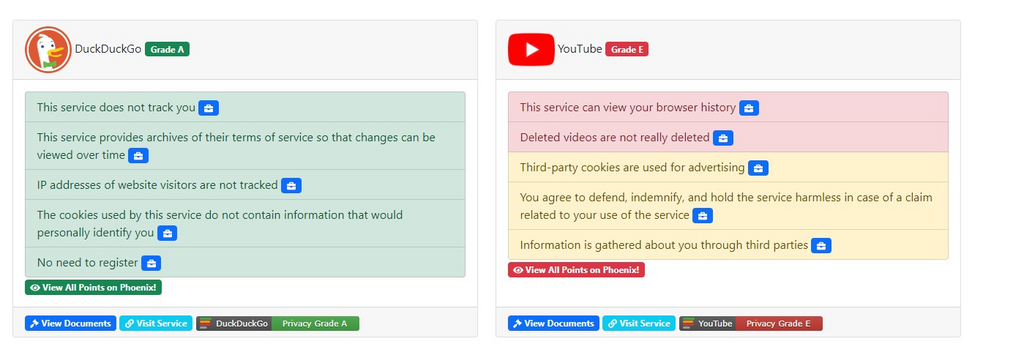
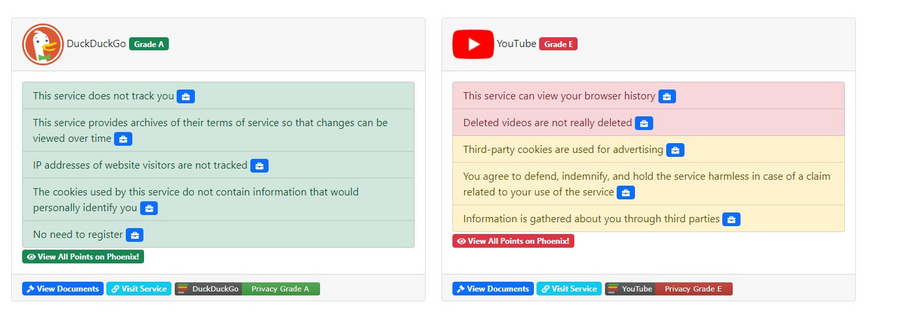
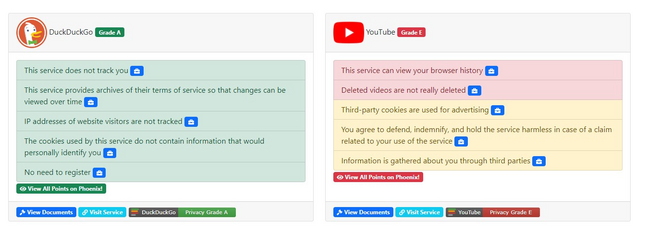
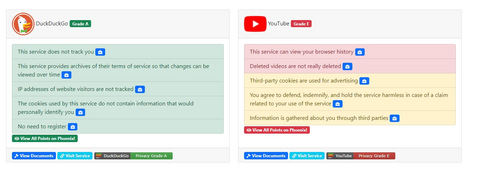
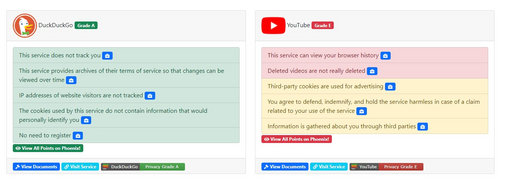 Terms of Service; Didn’t Read gave DuckDuckGo an A grade, meaning its terms of service is easy to understand and upholds digital privacy. YouTube, on the other hand, earned a lower grade of E, meaning its terms of service included potential concerns for digital privacy.
Terms of Service; Didn’t Read gave DuckDuckGo an A grade, meaning its terms of service is easy to understand and upholds digital privacy. YouTube, on the other hand, earned a lower grade of E, meaning its terms of service included potential concerns for digital privacy.
After looking at the ToS;DR site, it’s evident most businesses don’t write these policies in a way that’s friendly and understandable for their audience. Further studies support that thought. Visual Capitalist noted that Microsoft’s service agreement would take over an hour to read, while the shortest agreement (Twitter’s) would take 24 minutes.
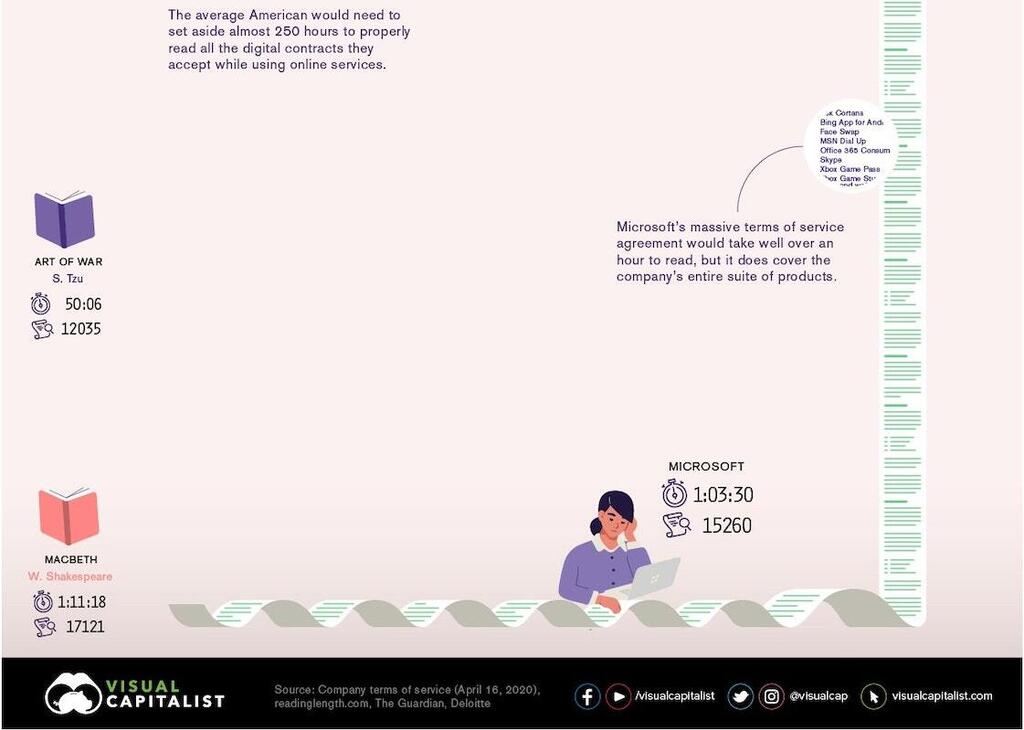
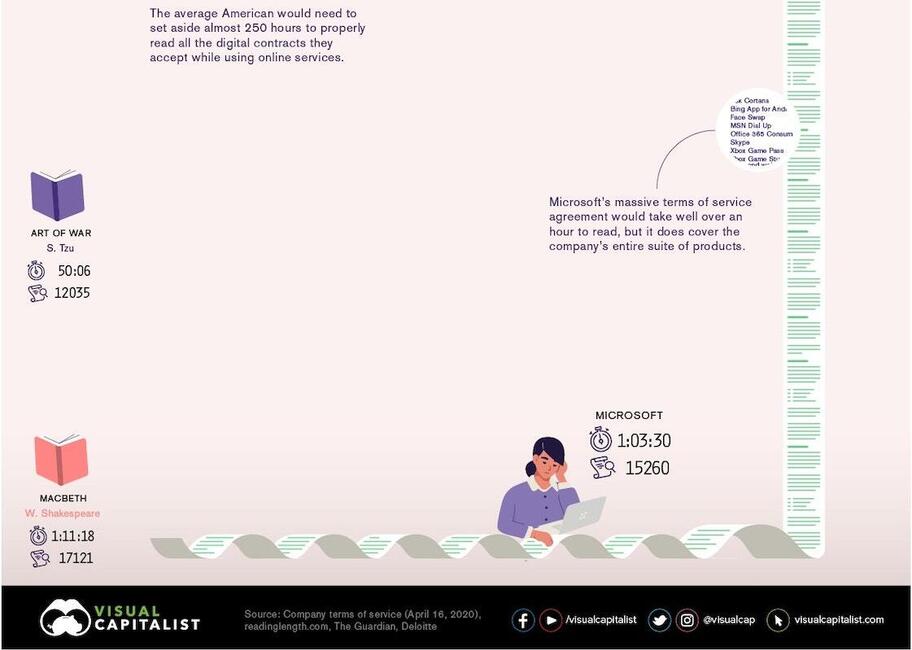
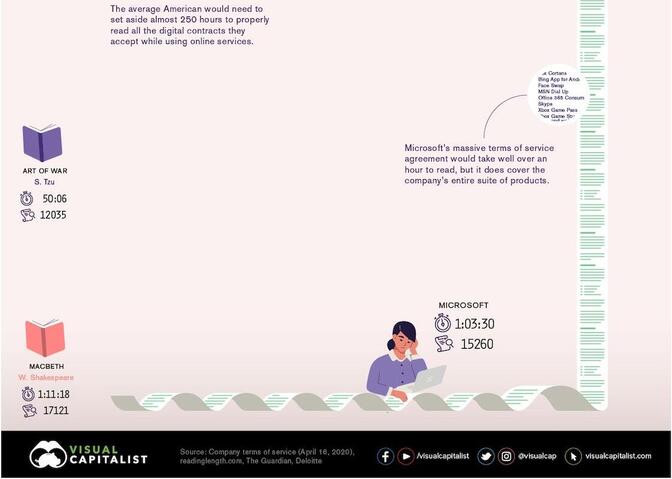
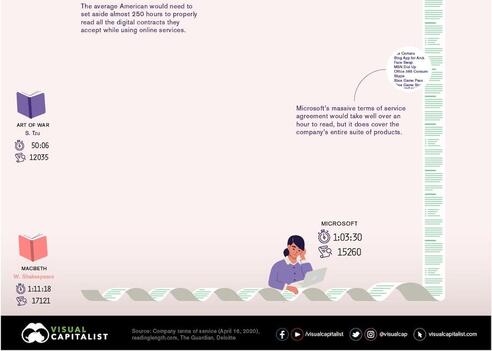
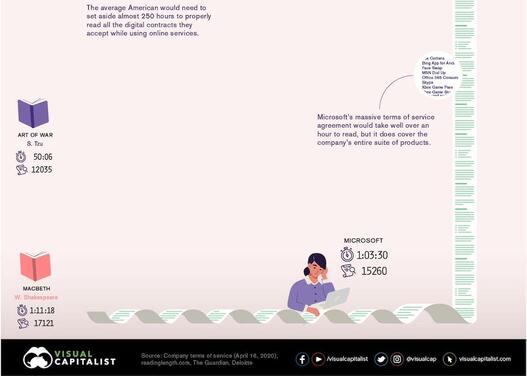 A snippet of Visual Capitalist’s infographic comparing how long it would take to read major companies’ service agreements. Microsoft’s agreement was the longest, clocking in at a read time of 1 hour, 3 minutes, and 30 seconds.
A snippet of Visual Capitalist’s infographic comparing how long it would take to read major companies’ service agreements. Microsoft’s agreement was the longest, clocking in at a read time of 1 hour, 3 minutes, and 30 seconds.
How to do a legal document review
As a writer, meeting with different stakeholders—including legal and compliance—is key to conducting a legal document review. This not only helps you maintain the integrity of the document, but ensures it meets the needs and expectations of all stakeholders.
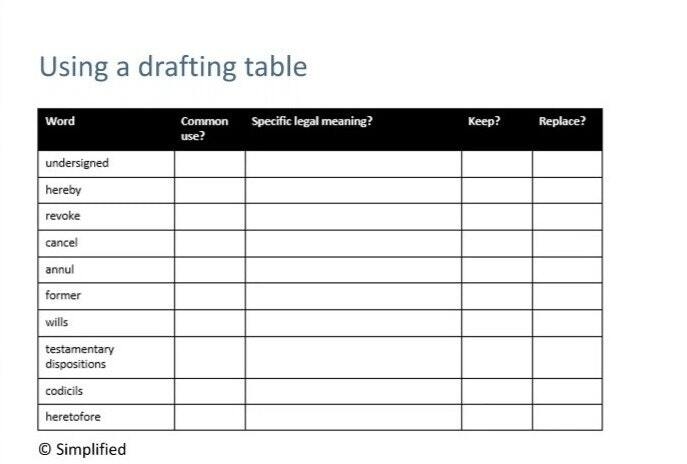 A drafting table like this one helps you identify whether confusing words or terms have a specific legal meaning or if you can discard or replace them with a better plain language option.
A drafting table like this one helps you identify whether confusing words or terms have a specific legal meaning or if you can discard or replace them with a better plain language option.
Once you’ve added all the circled words to the drafting table, sit down with your legal and compliance teams to fill in the rest of the info, including:
- What’s the common use of this word or term, if it has a common use?
- Does this word or term have a specific legal meaning? If so, what is it?
Then, decide whether to keep, replace, or completely remove the word or term from the document. If you choose to replace it, make sure your compliance and legal specialist agree on the replacement word or term.
It’s also a good idea to use this time to look for the following issues and update them based on the principles of clear writing as shared by the Office of the Federal Register, including:
- Change passive voice to active voice
- Replace nominals, or nouns with verbs inside—for example, “give consideration to” becomes “consider”
- Replace “shall” with “must”
- Use present tense
- Be consistent with the words you use
There are no rules regarding what words you use in legal documents—except two:Frances Gordon
Never use words your audience doesn’t understand You must remain accurate
co-founder at Simplified
Write out definitions
If you and your legal team decide it’s best to keep some legalese in the document, you can help your customers better understand what it means by adding definitions. This step is also important to tackle alongside your legal specialist to ensure the definition you include matches the legal meaning of the term or phrase.
When writing out your definitions, Gordon recommends considering these four parts:
- The term that’s being defined
- The verb
- The general group that the term belongs to
- The unique characteristics that distinguish the term from all others in its group
4. Compliance review
After your legal team signs off on the document and all edits made for plain language, it’s time to pay your compliance team another visit.
Your compliance specialist needs to ensure the contract or policy meets regulations set by the industry, a governing body, or even your own company. These can include:
- The Plain Writing Act (US.)
- Industry regulations (for example, Treating Customers Fairly for financial institutions in South Africa)
- CCPA, California Privacy Rights Act (CPRA), and Virginia Consumer Data Protection Act (VCDPA)
- GDPR (EU)
- Consumer Rights Act (UK.)
According to Gordon, these regulations usually require your document to meet the following guidelines:
- Your customers can explicitly accept your terms, and those terms must be in plain language
- The terms can’t be too long, but also shouldn’t leave out important information
- Your terms must pull important information to “the front of the experience”
- All information must be consistent at all stages of the customer’s experience—for example, you can’t say “fee” in one place and then say “rate” in another
- Your terms must help your customers make informed decisions
Your compliance team also has plain language regulations in mind and will help you spot any missed opportunities to translate legalese into text that’s easier to understand.
What is a document review checklist?
Also called a document control checklist or a single source of truth, the document review checklist includes items each reviewer should look for. The checklist ensures your legal agreements and policies are consistent, compliant, and meet quality standards.
Your document review checklist should include the following elements:
- The name of the document or project
- Document or project sponsors
- The workflow—what’s the next step, or who’s the next reviewer?
- Any guidelines the reviewer should follow
- The intended audience of the document
- The goals of the document
As far as checklist items for your reviewers to keep an eye out for, these are a great place to start:
- Correct dates and consistent date formats (for example, 1/12/2023 and 12/1/2023 are the same date but in different formats)
- Correct references are noted, and links point to the correct page and aren’t broken
- Correct spelling is used (for example, council versus counsel)
- Table of contents matches the structure of the document
- Clear communication and plain language are used
- Definitions are included where necessary
- All acronyms are spelled out on first use and an acronym list is included
- Structure or format matches the correct template, if a template is available
- Consistent terminology is used
A critical part of producing and updating legal policies and agreements, the document review process involves multiple steps and stakeholders. Each stage of the process helps ensure your document removes risk for your company and meets any requirements set by industry, brand, or government regulations.
On top of that, the document review process helps you as the writer ensure you can safely and accurately translate legalese into clear, easily understandable language.
While all these steps and requirements may seem cumbersome, content production software like Bynder's Content Workflow can help streamline your review process. It acts as your single source of truth, template database, and communication and approval hub. Learn more and start a free trial of Bynder’s Content Workflow today.










